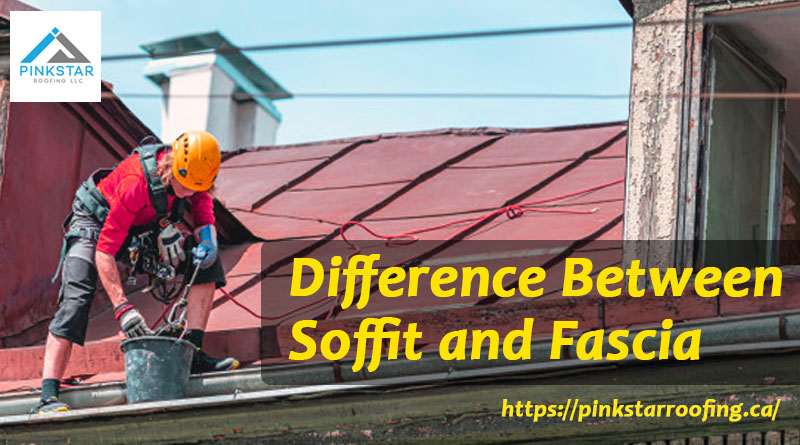What is the Difference Between Soffit and Fascia?

When completing the exterior part of your home, there are a few key parts that need to be addressed. Two finishing pieces that are important to the design of your roof are the fascia and soffit. Since they are close together, many believe they are substitutes for one another. But that is not the case, as they have their own specific purposes.
Difference Between Soffit and Fascia 2021
Let’s elaborate on both Fascia and Soffit. Check below;
What is Fascia?
The location of fascia is under the roofline. Often, it is a flat piece of material used to defend the roofline of your home. Attached to the gutters, this helps combat leakage from precipitation. When dealing with customer’s roof leaks, it is common that the fascia was not installed properly, or at all. The material of fascia is usually wood, but they can be aluminum and vinyl too. When getting your roof replacement, ensure that you have this included for roof durability. If you are missing fascia, then your roof may not surpass the average lifespan of 15-20 years.
What is Soffit?
In a lot of cases, roofs have overhangs to add more protection to your home. When the roof meets the walls and does not have an overhang, penetrations spots for rain and snow are evident. Your attic would be at higher risk for water spots and mold when this scenario occurs. The overhang is protected by the soffit which is present under the extended part of your roof. With the inclusion of a soffit, your roof deck and attic are safer from the elements.
A properly installed Soffit will help with the following
1. Air circulation in your home
2. Removal of moisture
3. Mold and water spot prevention
Moreover, the air circulation in your home is important for temperature control. Without the soffit, there is a chance wind can find a way into your home. Your air conditioning and heating won’t be as effective, and your thermostat bills will increase. This will be problematic for temperature controlling during hot summer days and winter weather. Moisture build-up can result in some impactful long-term effects on your roof. If moisture in the attic accumulates, this could damage the walls and roof. The increase in moisture will tear away at the roof and create more openings.
While a fascia is not viewed as a necessity, soffits usually are. Without the soffit, your roof will have an unfinished look when looking at the overhang. This will also expose the rafter and eaves, creating risk for wood rot, leakage, and mold growth. They also prevent animals and insects from nesting in the overhang area. This is problematic as they could travel to further parts of your home and create a bigger issue.
To Summarize: The Difference Between Soffit and Fascia
PinkStar Roofing LLC ensures each roof replacement has every area of the roof covered. We understand the importance of the soffit and fascia installation. Without these additions, we wouldn’t feel as if the job is completed. Moreover, we want your roof to be as durable as possible. This will not happen if any area is neglected. At PinkStar Roofing LLC, we provide premium roofing services. Being in the industry for over a decade, we know what customers need in a roof replacement. Our roofers are knowledgeable and understand the mistakes other companies tend to make. We pride ourselves on being perfectionists so that we can make your investment as great as possible. If you have any questions about soffit or fascia, give us a call at 647-264-4115
